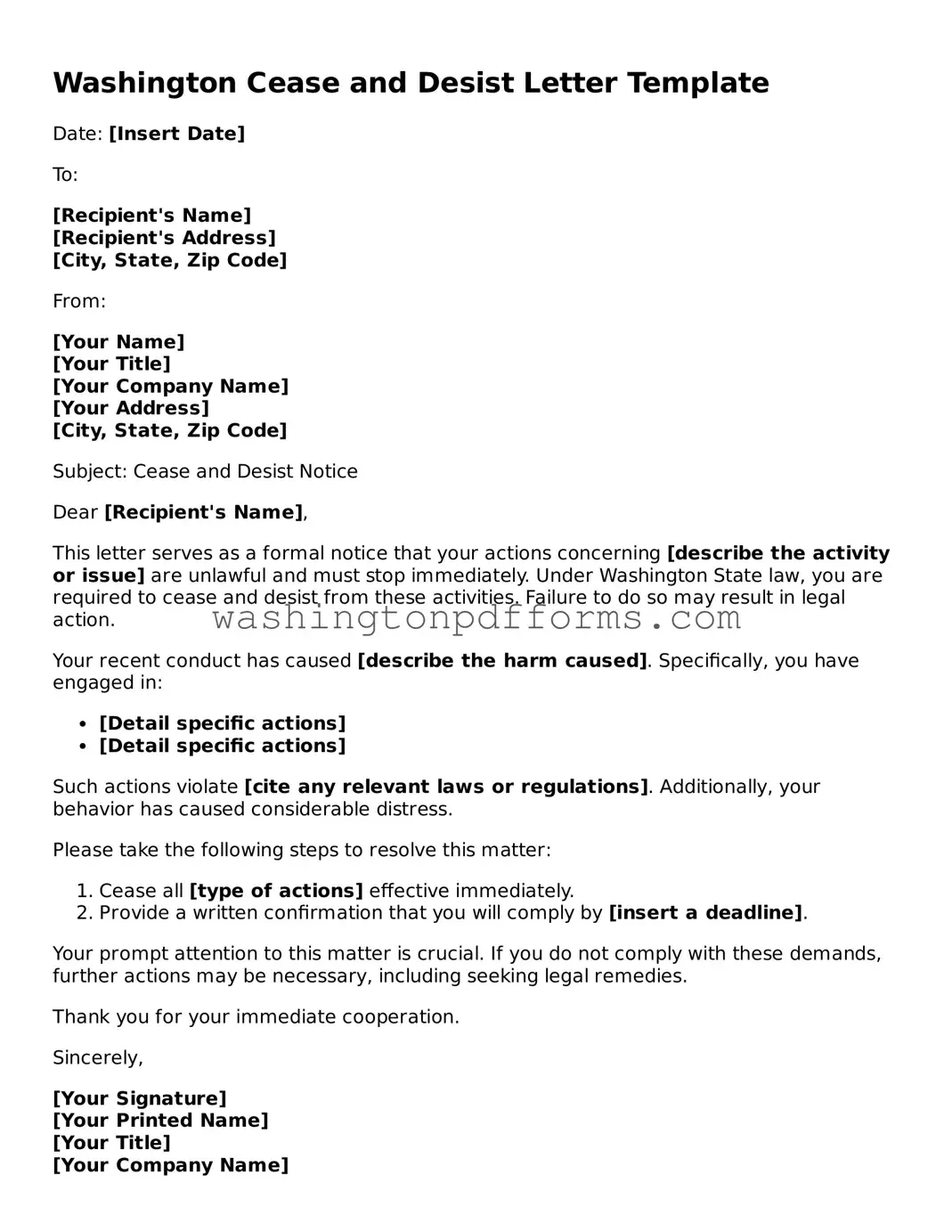Filling out a Washington Cease and Desist Letter form can be straightforward, but many individuals make common mistakes that can undermine their efforts. One frequent error is failing to include the correct recipient's name and address. Without accurate information, the letter may not reach the intended party, rendering it ineffective.
Another mistake is neglecting to clearly state the specific behavior that needs to stop. A vague description can lead to confusion and may not compel the recipient to take action. It's essential to be explicit about the actions that are causing harm or distress.
People often overlook the importance of providing evidence to support their claims. Including documentation or examples strengthens the case and demonstrates the seriousness of the request. Without this, the letter may come off as less credible.
Additionally, some individuals fail to specify a deadline for compliance. A clear timeline can create urgency and encourage the recipient to respond promptly. Without a deadline, the letter may lack the necessary pressure to provoke action.
Another common oversight is using overly aggressive language. While the letter should convey seriousness, it’s crucial to maintain a professional tone. Hostile wording can lead to defensiveness and may escalate the situation rather than resolve it.
Many people also forget to include their contact information. Providing a way for the recipient to respond is vital. If they cannot reach you, the issue may remain unresolved, and the letter's purpose defeated.
Some individuals make the mistake of sending the letter without retaining a copy for their records. Keeping a copy is important for future reference, especially if further legal action becomes necessary.
Moreover, failing to follow up after sending the letter can be a significant error. It’s wise to check in with the recipient to ensure they received the letter and understand its contents. This can facilitate communication and help resolve the issue more effectively.
Lastly, not seeking legal advice before sending the letter can lead to complications. Consulting with a legal professional can provide clarity and ensure that the letter is appropriately crafted to meet legal standards.
